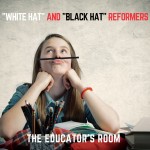[fusion_builder_container hundred_percent=”yes” overflow=”visible”][fusion_builder_row][fusion_builder_column type=”1_1″ background_position=”left top” background_color=”” border_size=”” border_color=”” border_style=”solid” spacing=”yes” background_image=”” background_repeat=”no-repeat” padding=”” margin_top=”0px” margin_bottom=”0px” class=”” id=”” animation_type=”” animation_speed=”0.3″ animation_direction=”left” hide_on_mobile=”no” center_content=”no” min_height=”none”]
A visitor walking into a school encounters the school’s mission statement on a banner or etched on a plaque, or painted on to the wall. The mission statement defines the school’s purpose. My middle/high school’s mission statement reads,
The mission of Wamogo Middle/High School is to educate all students in a challenging, disciplined, and supportive environment. In cooperation with students, parents, and community members we seek to empower students to be life-long, independent learners and contributors in a diverse and ever-changing society.
However, there are other statements that currently guide curriculum for K-12 teachers including the curriculum in my district. These statements are found in the Common Core State Standards (CCSS) that have been adopted by 45 states. So, how closely do the CCSS statements match mission statements?
Below, three randomly selected school mission statements plus the mission statement from my own school, Wamogo Middle/High School have been digitally combined and sorted. These statements are generic enough to be for any grade level; they could be for any school. You could test your school’s mission statement as well. I pasted the combination of these four statements into a Wordsift.com word cloud generator that highlights the more frequently used terms. (illustration below)
_______School recognizes that each child is an individual; that all children are creative; that all children need to succeed. Therefore, _______ School respects the individual needs of children; fosters a caring and creative environment; and emphasizes the social, emotional, physical, intellectual development of each child.
Our mission at ____ High School is to provide individualized education that addresses students’ unique learning styles, cultivates independent thought, and promotes the building of character, enabling them to contribute to their communities in meaningful and positive ways.
The mission of _______Public Schools is to assure that, within a nurturing and stimulating environment, each of our diverse students and graduates achieves literacy and appropriate core competencies, and becomes a responsible and compassionate citizen.
Next, I selected an an excerpt from introduction that explains the purpose and goals of the Common Core State Standards; the text selected was about the same length as the mission statements. I pasted the excerpt into another Wordsift.com word cloud generator that highlights the more frequently used terms. (illustration below)
The standards are informed by the highest, most effective models from states across the country and countries around the world, and provide teachers and parents with a common understanding of what students are expected to learn. Consistent standards will provide appropriate benchmarks for all students, regardless of where they live.
These standards define the knowledge and skills students should have within their K-12 education careers so that they will graduate high school able to succeed in entry-level, credit-bearing academic college courses and in workforce training programs. The standards:
- Are aligned with college and work expectations;
- Are clear, understandable and consistent;
- Include rigorous content and application of knowledge through high-order skills;
- Build upon strengths and lessons of current state standards;
- Are informed by other top performing countries, so that all students are prepared to succeed in our global economy and society; and
- Are evidence-based.
What is immediately apparent is that the language in the school mission statement Wordsift wordcloud is very different than the language in the CCSS Wordsift wordcloud. For example, the words education and school do not appear in the CCSS wordcloud; the words skill and knowledge do not appear in the school mission statements wordcloud. The word standard is emphasized in the CCSS wordcloud; the word child is emphasized in the school mission statement wordcloud. The word career is in the CCSS workcloud; its counterpart is citizen in the mission statement wordcloud. The words college, consistent, informed, provide dominate the CCSS wordcloud. The words creative, environment, individual, need dominate the school mission statement wordcloud. The word student is one of the few emphasized overlapping vocabulary choices. Neither mentions 21st century skills.
I am not a fan of school mission statements. They are usually written by committee, and each successive rewrite makes the language in the statement generalized or vague or bland; I believe that “please all, please none” is the problem with a mission statement. However, one would hope that the differences in diction between a generic mission statement and the Common Core would not be so striking. Ultimately, these two ideas contribute to a common outcome; there should be some commonality other than an emphasis on the word student.
Additionally, the difference is not only one of word choice, but also one of tone. The verbs assure, become, contribute, cultivate, foster, promote, and recognize in the school mission statement wordcloud differ in tone from the few verbs build, define, learn, live, and graduate in the CCSS wordcloud. The adjectives caring, compassionate, diverse, individualized, stimulating in the school mission statement wordcloud differ in tone from aligned, appropriate, effective, expected, higher order, global and rigorous as adjectives in the CCSS wordcloud. The words social, public and character are not in the CCSS wordcloud; the words economy, benchmark and workforce are not in the mission statement wordcloud. Perhaps it is not a surprise that the language of the mission statements is more sensitive or empathetic in tone than the businesslike language of the CCSS.
My random selection of the three school mission statement plus the statement of my own school cannot possibly speak for all school mission statements. There may be mission statements that have vastly different vocabulary. Regardless, this imperfect comparison highlights a gap in the language of these mission statements and the language of the CCSS. The goals and purpose of the Common Core should have something in common with goals and purpose of a school.[/fusion_builder_column][/fusion_builder_row][/fusion_builder_container]




